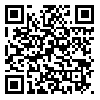Volume 28 - Supplementary
IBJ 2024, 28 - Supplementary: 297-297 |
Back to browse issues page
Download citation:
BibTeX | RIS | EndNote | Medlars | ProCite | Reference Manager | RefWorks
Send citation to:



BibTeX | RIS | EndNote | Medlars | ProCite | Reference Manager | RefWorks
Send citation to:
Zarei R. Role of Emerging Technologies in Addressing Low Birth Rates and Promote Reproductive Health. IBJ 2024; 28 :297-297
URL: http://ibj.pasteur.ac.ir/article-1-4733-en.html
URL: http://ibj.pasteur.ac.ir/article-1-4733-en.html
Abstract:
Introduction: Declining birth rates and aging populations pose significant challenges to healthcare systems, economies, and social welfare in many countries worldwide. Technological advances have taken promising steps to address these demographic concerns by promoting reproductive health, raising awareness, and encouraging childbearing among the younger generation.
Search Strategy: This review was conducted from May to June 2024, utilizing specific keywords and search strategies from databases such as Irandoc, SID, Magiran, PubMed, and Google Scholar. The keywords included ("Reproductive Health" [Title/Abstract] OR "Fertility" [Title/Abstract] OR "Childbearing" [Title/Abstract]) AND ("Telemedicine" [Title/Abstract] OR "Mobile Applications" [Title/Abstract] OR "Reproductive Techniques, Assisted" [Title/Abstract] OR "Health Education" [Title/Abstract]) AND (birth rate [Title/Abstract] OR population growth [Title/Abstract] OR population aging [Title/Abstract])). At first, 23 English and Farsi articles were reviewed, and finally, eight articles were selected as related to the topic and objectives of the study.
Results: Several technological platforms were designed to promote fertility and childbearing. For improved clarity, they can be organized into three three general categories. Educational and awareness platforms, such as online educational resources and social media campaigns, can effectively disseminate information on fertility, childbearing and parenting skills, thereby increasing awareness and motivation among young couples. Additionally, fertility tracking and monitoring technologies, including mobile applications and wearable devices that track ovulation cycles, monitor reproductive health, and provide personalized fertility advice, can help couples in planning their pregnancies more effectively. Furthermore, telemedicine and remote monitoring solutions, such as telemedicine platforms and telemonitoring devices, offer accessible and convenient virtual prenatal care and online consultation. These innovations assist in reducing barriers to healthcare access, especially in rural areas, and improve maternal and fetal health outcomes.
Conclusion and Discussion: Comprehensive strategies can empower couples to make informed decisions and overcome barriers to childbearing. By integrating these technological solutions, policymakers and healthcare providers can create a supportive ecosystem that encourages childbearing and addresses the challenges of low birth rates. However, there are concerns about the potential ethical, legal, and social implications of using these technologies, such as security and privacy. There are also potential challenges to adopting and implementing these technologies, such as cost, access, and cultural or social norms. Continuous research and responsible implementation of these technologies are fundamental to promoting sustainable population growth.

Search Strategy: This review was conducted from May to June 2024, utilizing specific keywords and search strategies from databases such as Irandoc, SID, Magiran, PubMed, and Google Scholar. The keywords included ("Reproductive Health" [Title/Abstract] OR "Fertility" [Title/Abstract] OR "Childbearing" [Title/Abstract]) AND ("Telemedicine" [Title/Abstract] OR "Mobile Applications" [Title/Abstract] OR "Reproductive Techniques, Assisted" [Title/Abstract] OR "Health Education" [Title/Abstract]) AND (birth rate [Title/Abstract] OR population growth [Title/Abstract] OR population aging [Title/Abstract])). At first, 23 English and Farsi articles were reviewed, and finally, eight articles were selected as related to the topic and objectives of the study.
Results: Several technological platforms were designed to promote fertility and childbearing. For improved clarity, they can be organized into three three general categories. Educational and awareness platforms, such as online educational resources and social media campaigns, can effectively disseminate information on fertility, childbearing and parenting skills, thereby increasing awareness and motivation among young couples. Additionally, fertility tracking and monitoring technologies, including mobile applications and wearable devices that track ovulation cycles, monitor reproductive health, and provide personalized fertility advice, can help couples in planning their pregnancies more effectively. Furthermore, telemedicine and remote monitoring solutions, such as telemedicine platforms and telemonitoring devices, offer accessible and convenient virtual prenatal care and online consultation. These innovations assist in reducing barriers to healthcare access, especially in rural areas, and improve maternal and fetal health outcomes.
Conclusion and Discussion: Comprehensive strategies can empower couples to make informed decisions and overcome barriers to childbearing. By integrating these technological solutions, policymakers and healthcare providers can create a supportive ecosystem that encourages childbearing and addresses the challenges of low birth rates. However, there are concerns about the potential ethical, legal, and social implications of using these technologies, such as security and privacy. There are also potential challenges to adopting and implementing these technologies, such as cost, access, and cultural or social norms. Continuous research and responsible implementation of these technologies are fundamental to promoting sustainable population growth.

| Rights and permissions | |
 |
This work is licensed under a Creative Commons Attribution-NonCommercial 4.0 International License. |







.png)
